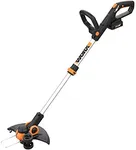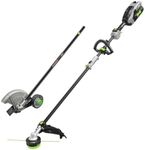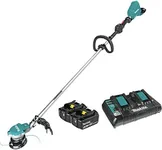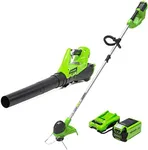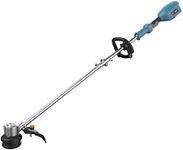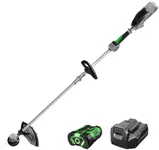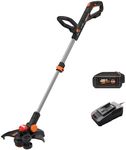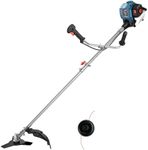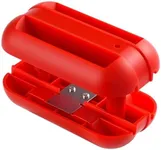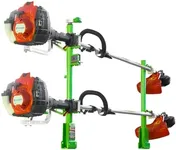Buying Guide for the Best Cordless Weed Eaters
Choosing a cordless weed eater can make yard maintenance much more convenient. These tools are battery-powered and offer freedom of movement, allowing you to trim and edge without worrying about cords or gas. When selecting the best one for your needs, it's important to consider a few key features that affect ease-of-use, performance, and suitability for your specific yard.Battery Voltage (V)Battery voltage is a measure of the power your cordless weed eater can deliver. Higher voltage generally means more cutting power, which can be helpful for thicker weeds or larger areas. Battery voltages typically range from about 18V to 60V. For small yards and light trimming, lower voltages may suffice, offering lighter weight and easier handling. Medium yards or mixed tasks may call for a mid-range voltage. More powerful, high-voltage options are best if you have tough weeds, heavy grass, or a lot of ground to cover. Think about the size and type of vegetation in your yard when deciding which voltage range will suit you best.
Battery Capacity (Ah)Battery capacity, shown as amp-hours (Ah), tells you how long the weed eater can run on a single charge. A higher Ah rating means longer run time before you need to recharge. Typically, batteries range from 1.5Ah to 5.0Ah or more. If you have a small yard or only a few areas to trim, a lower capacity may be fine. For larger yards, or if you prefer not to stop and recharge midway, choose a higher capacity battery to ensure you can finish the job in one go.
Cutting WidthCutting width is the size of the area the string trimmer can cut in one pass, usually measured in inches. Smaller widths (10-12 inches) are good for tight spaces and precision work, but take longer to cover large areas. Medium widths (12-14 inches) provide a balance between agility and efficiency. Larger widths (14 inches and above) help you finish quickly if you have a lot of yard to cover, but may be harder to maneuver in tight or delicate spaces. Consider the layout and obstacles in your yard when picking the cutting width that matches your needs.
WeightThe weight of a cordless weed eater affects how easy it is to carry and use, especially for longer periods or for those who may have strength or mobility concerns. Lighter models are easier to handle and are a good fit if you have a smaller area to trim or anticipate extended use. Heavier models may offer more power and durability but can become tiring to use. When choosing, think about your strength, how long you'll usually use the trimmer, and if comfort plays a big role in your experience.
Line Feed SystemThe line feed system refers to how fresh cutting line is released as it wears down. Options include manual feed, bump feed (where you tap the trimmer head to advance more line), and automatic feed (where the line advances automatically). Manual feed is simple but can interrupt your workflow; bump feed gives you control but requires some practice; automatic feed is the most convenient but can use line faster. Choose based on your preference for convenience versus control, and how comfortable you are with learning a new system.
Shaft TypeShaft type refers to whether the weed eater has a straight or curved shaft. Straight shafts are longer and better for reaching under bushes and into tight spots, and they tend to be more versatile for edging. Curved shafts are usually lighter and offer better maneuverability in smaller spaces, making them easier to handle for those new to yard work. Think about the sort of trimming you'll do most often and choose the shaft style that matches the types of spaces you'll navigate.
